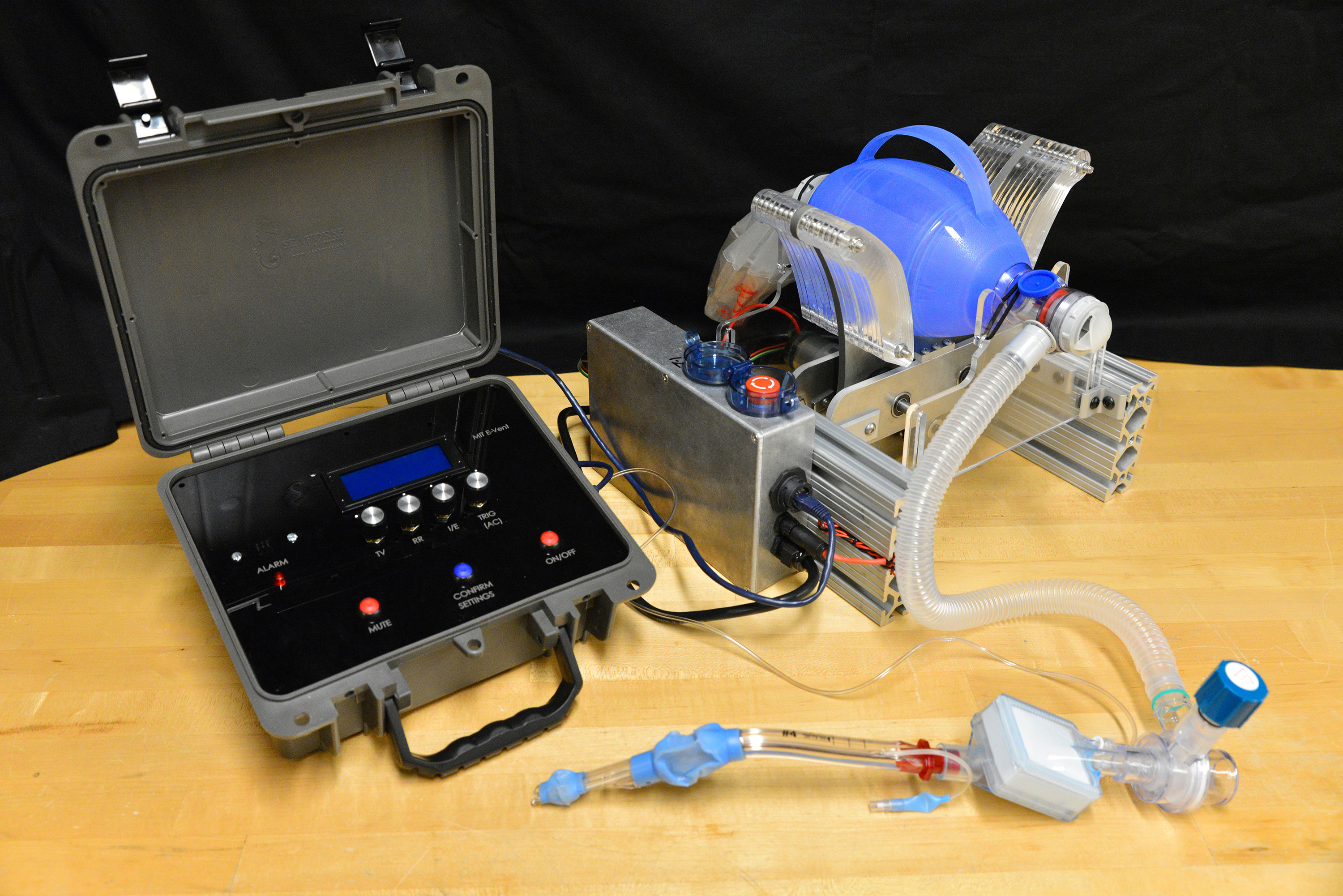Inside MIT’s low-cost ventilator project

When professor of mechanical engineering Alex Slocum Sr. ’82, SM ’83, PhD ’85, and his son, Alexander Slocum Jr. ’08, SM ’10, PhD ’13, started hearing the reports out of Italy in early March, they knew a crisis was heading our way. So many Italians hospitalized with covid-19 were having trouble breathing on their own that medical staff were forced to ration their ventilators, the potentially life-saving devices that keep air flowing into a patient whose lungs are failing. Slocum Jr., a mechanical engineer who is now a surgical resident at the Medical College of Wisconsin, dug into the data to predict the potential ventilator shortage in this country.
“The numbers are frightening, to put it bluntly,” he says. “We estimated a shortage of around 100,000 to 200,000 ventilators was possible by April or May.”
Slocum Sr. pulled out a design developed a decade ago as a student team project in the 2.75 (Medical Device Design) class he’d taught with research scientist Nevan Hanumara, SM ’06, PhD ’12. He and his other son, Jonathan Slocum ’14, SM ’15, ScD ’18, began sketching ideas and quickly sent a rough CAD model to the Hobby Shop, where Coby Unger printed the parts. Hanamura and the Slocums rapidly pulled together volunteers with expertise in mechanical design, electronics, and controls, plus doctors with experience in treating respiratory conditions. The team, called E-Vent, started working nonstop to refine the design, which had originally cost about $500 to build (a conventional ventilator can cost $30,000), and began posting their research online. Within four weeks, production of the first devices based directly on their work had begun in New York City.
That machine, called the Spiro Wave, was given preliminary FDA approval in April; the consortium of companies producing it—which includes 10XBeta, founded by Marcel Botha, SM ’06—expected to quickly deliver hundreds of units to hospitals in New York and, eventually, around the country. As of mid-May, E-Vent was continuing to develop the design further and sharing what they learned in the form of open-source guidelines that local teams can adapt to their materials and needs.
The principle behind the original design is simple: take an emergency resuscitator bag (Ambu is a common brand), which is designed to be squeezed by hand, and automate the squeezing action using a pair of curved paddles driven by a motor. But there’s a lot more to it, Hanumara says: “The controls are really tricky, and they have required many iterations as our understanding of the clinical and safety challenge grew.”
“Covid patients often require ventilation for a week or more, and in longer cases that would mean about a million breaths,” adds Slocum Jr., who helped lead the initial ramp-up of E-Vent. So the paddles are designed to minimize wear on the bag.
The team also includes Daniela Rus, head of CSAIL; Albert Kwon ’08, HST ’13, an anesthesiologist at Westchester Medical Center in New York; and many others.
“While our design cannot replace a full-featured ventilator,” Hanumara stresses, “it does provide key ventilation functions that will allow health-care facilities under pressure to better ration their ICU ventilators and human resources.”
Keep Reading
Most Popular
Large language models can do jaw-dropping things. But nobody knows exactly why.
And that's a problem. Figuring it out is one of the biggest scientific puzzles of our time and a crucial step towards controlling more powerful future models.
The problem with plug-in hybrids? Their drivers.
Plug-in hybrids are often sold as a transition to EVs, but new data from Europe shows we’re still underestimating the emissions they produce.
Google DeepMind’s new generative model makes Super Mario–like games from scratch
Genie learns how to control games by watching hours and hours of video. It could help train next-gen robots too.
How scientists traced a mysterious covid case back to six toilets
When wastewater surveillance turns into a hunt for a single infected individual, the ethics get tricky.
Stay connected
Get the latest updates from
MIT Technology Review
Discover special offers, top stories, upcoming events, and more.